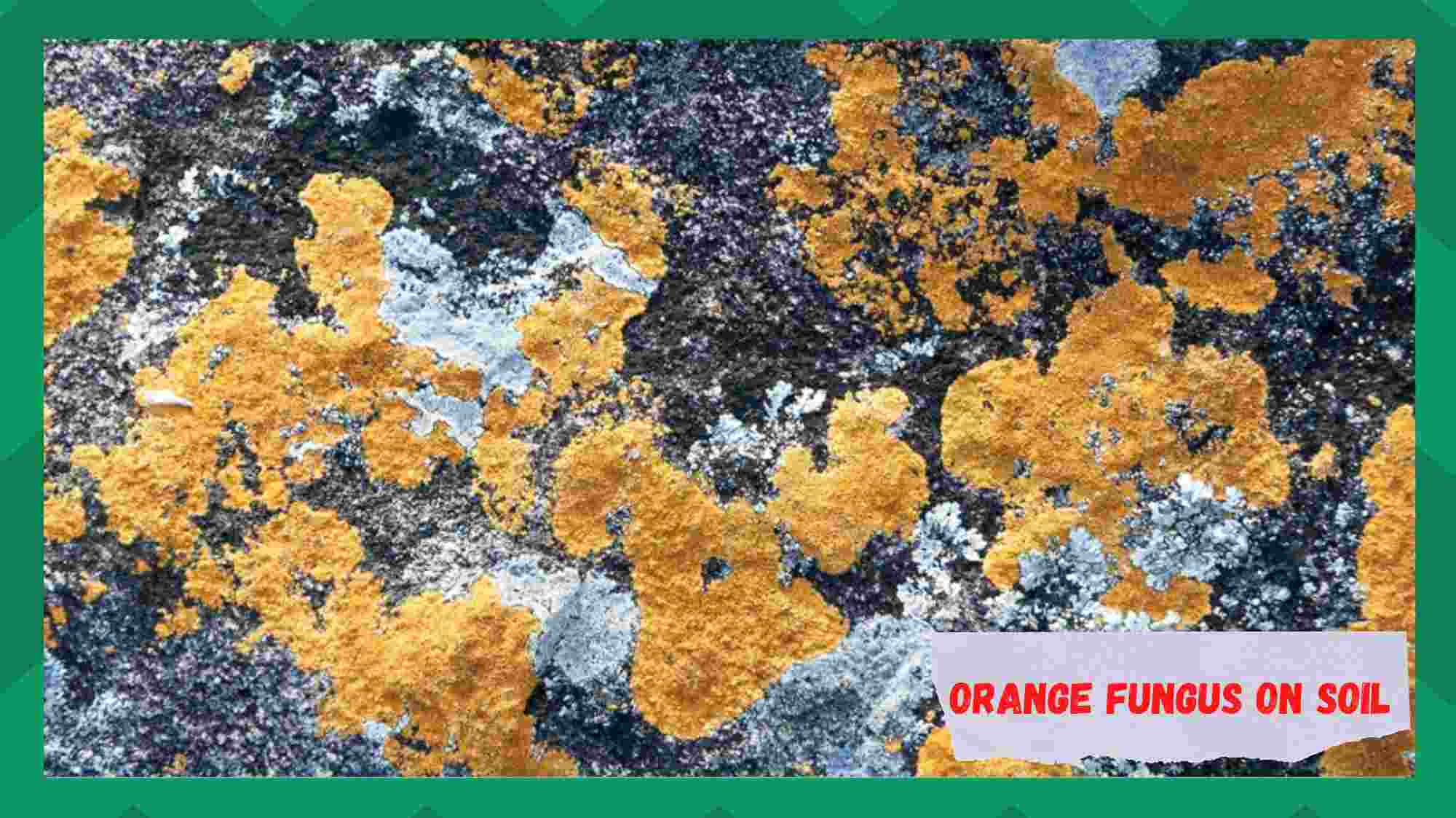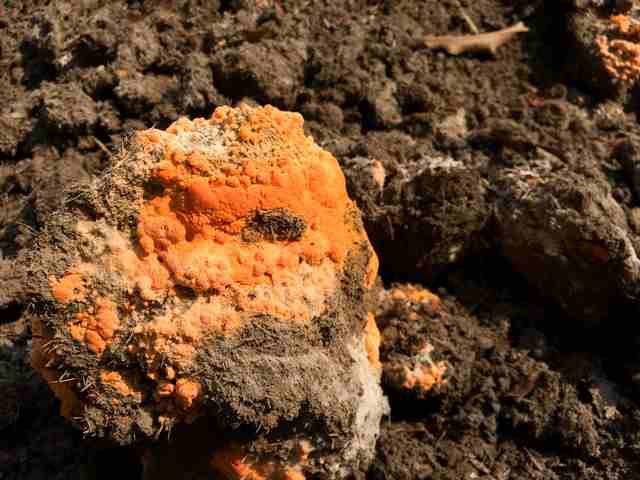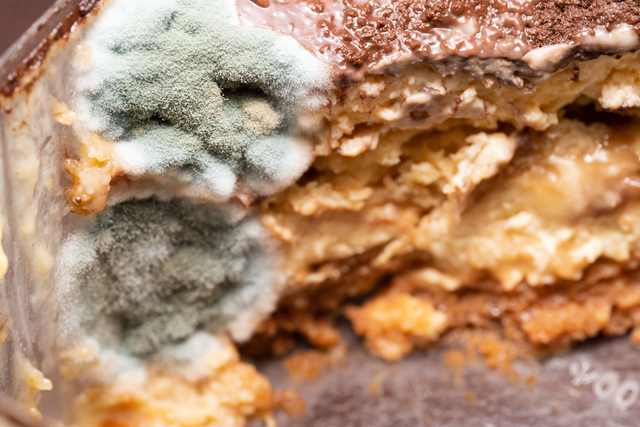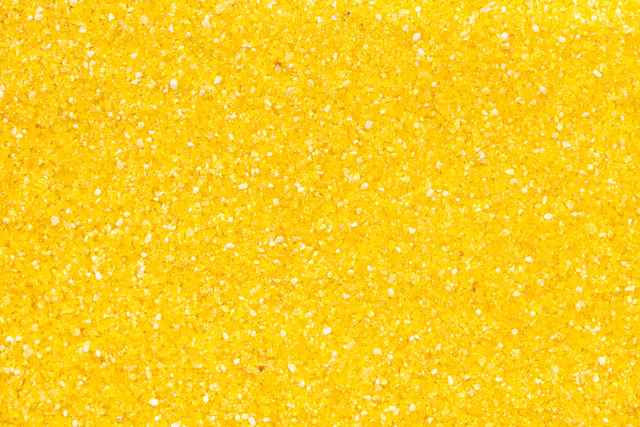
Fungi are multicellular organisms from the eukaryotic group of organisms. They are found in almost all habitats all over the world. They digest food externally and use their cell walls to absorb nutrients. Around 1,44,000 species of kingdom fungi have been discovered as of yet.
Orange fungus on soil is a common problem faced by millions of landscapers worldwide. It surely looks untidy, and for a gardener who carries out routine maintenance to develop a lush green lawn, this sight can be a nightmare.
If you wake up one morning and see orange fungus all over your soil surface, don’t be surprised. Many gardeners panic when they see orange fungus. However, it turns out that it does not affect the plants and grass in your yard. As a matter of fact, it is beneficial for your plants.
No matter whether orange fungus affects your plants or not, it looks terrible, nevertheless. So, it is understandable if you want to get rid of it. In this article, we will walk you through some tried and tested methods to eliminate orange fungus on soil quickly and easily. Let’s delve deeper without any further ado!
How to Deal With Orange Fungus on Soil
Below are some proven ways to remove orange fungus from your plant soil.
- Identifying the Culprit
Identifying the orange fungus is the first step to eliminating it. Incorrect identification will likely result in wrong treatment methods, eventually costing you time and money.
Orange fungus usually grows in gardens, bakery items, and fruits. Depending on the species, it can be of many colors, including yellow. Regardless of its color, it has an unsightly appearance and is rightfully called “dog vomit fungus.”
It usually grows in moist environments and feeds on decaying wooden splinters or microbial organisms such as bacteria. Contrary to its name, it is not actually a fungus.
- Reproduction Process
Spores on orange fungus are responsible for reproduction. Under favorable conditions, orange fungus reproduces asexually with its spores. During reproduction, millions of spores are released in the air and are carried by the wind from one place to another.
These spores are whitish and settle in the household gardens and are even seen growing on indoor plants as well.
- Removing the Mold
The orange fungus does not cause harm to your plants and is not allergic to humans either. In fact, it is your partner in lawn care as it feeds on bacteria and fungi.
It is common knowledge that bacteria and fungi are harmful to plants as they cause several plant diseases, such as powdery mildew. Not only do they ruin your plants’ appearance, but they also cause damage.
Eventually, orange fungus dries up and leaves a white powder behind, which is not harmful or allergic either. Since it is beneficial to your plants, it is recommended not to remove orange fungus from the soil.
However, if you still want to eliminate slime mold from the plant soil, there are many ways to do so. All you need to do is remove the top two inches of the soil using a spoon or other similar object. And that’s pretty much it!
- Reduced Exposure to Light
As mentioned earlier, orange fungus thrives in wet environments. So, if you have kept your plants in a place with low sunlight, fungi will not hesitate to take over. If that’s the case, consider removing it manually following the aforementioned method.
Once done, place it in a sunny spot where it can receive direct sunlight. Remember that slime mold hates sunlight and will go away if your plants get enough sunlight. This is why it usually appears during winter and spring.
In addition to that, overwatering is also often associated with slime mold growth on the soil surface. Winter is a rest period for most plants, and they require less water than summer. So, if you have been watering your plants according to their summer requirements, it may lead to this problem.
If so, avoid overwatering them. Water needs differ depending on your plant’s variety. So, consider consulting with a botanist if you are unsure about watering frequency.
Furthermore, if you are growing the affected plant in a pot, make sure it has a proper drainage system. Drainage holes may get blocked over time. If so, you will need to repot your plant. While repotting, make sure to hold it gently and loosen its roots.
Some people mistake slime mold for a symptom of nutrient deficiency and fertilize their plants. However, it turns out that fertilizing also facilitates the growth of slime mold in plants.
Not only do fertilizers provide nutrients to slime mold, but also to fungi and bacteria. So, refrain from fertilizing your plants if the soil has orange fungus.
- Using Cornmeal
Cornmeal can also be used to get rid of orange fungus on your soil. It is an effective method, and the best part is that cornmeal is available in most kitchens. For this purpose, create a paste of water and cornmeal and apply it to the area suffering from orange fungus.
And yes, consider applying this paste a few feet around the area as well. When applied properly, it will significantly reduce the slime mold growth on your soil. Keep in mind that it may take a few weeks to work, and if it doesn’t, you may need to apply it again.
- Heating
Heating has also shown excellent results against orange fungus. To kill it by heating, you will need to heat it at around 104 F. However, it is recommended to keep the affected plant under sunlight first. If that doesn’t work, heating the soil in an oven would be your last resort.
- Fungicide
Using a fungicide is a great way to remove slime mold from the soil. Although fungicides are used to destroy fungi, they can also be used to kill slime mold.
Before starting the procedure, do not forget to wear your personal safety gear. Fungicides do not pose a serious threat to human health, but it is advised to wear gloves and goggles as they may cause irritation to your skin and eyes.
Moreover, keep your pets and kids away from the treated area until the fungicide dries.
A sprayer with an adjustable nozzle works best for applying a fungicide. Instructions regarding application and amount are usually mentioned on the fungicide package. So, consider going through them before applying.
The Bottom Line
Despite the benefits it offers, many landscapers eliminate slime mold because of its hideous appearance. It loves growing in moist environments and appears when your plants don’t get adequate sunlight.
Avoid overwatering and fertilizing your plants if they are affected by orange fungus, and make sure the drainage holes in your pot are not blocked.








Hello! Thank you for this article. I was so grossed out to see this slime covering my soil. I thought it was all ruined. Is it safe to assume that this also applies to vegetable and herb plants that will be consumed? Because the soil that was affected is also used for vegetable and herb plants. 😟